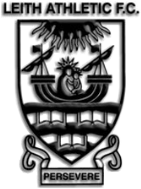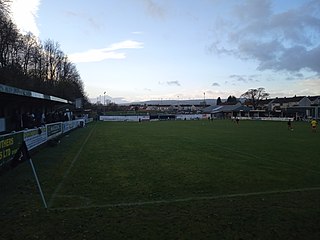
Leith Athletic Football Club is a football club based in the Leith area of Edinburgh, Scotland. They compete in the East of Scotland Football League, Conference A. First team matches are played at Peffermill 3G.
St Bernard's Football Club were a football club based in Edinburgh, Scotland. The club was established in 1878 and joined the Scottish Football League. They played at several different grounds before making the Royal Gymnasium Ground their long-term home. However, after having to sell it in 1943, the club was dissolved.
Alexander "Sandy" Archibald was a Scottish footballer, who played for Raith Rovers, Rangers and Scotland. He was later secretary/manager of Raith and Dunfermline Athletic.
Tontine Park was a football ground in Renton, West Dunbartonshire, Scotland. It was the home ground of Renton F.C. from 1878 until 1922, including their time in the Scottish Football League.
Harry Graham was a Scottish professional footballer who played in the Scottish Football League for Raith Rovers and Heart of Midlothian, and in the Football League for Bradford City, Birmingham, Leicester City and Reading. He played as an inside forward.
The Fife derby is a football rivalry that is based in Fife, Scotland. Matches are contested between any two SPFL clubs from Dunfermline Athletic, Raith Rovers, East Fife and Cowdenbeath. As of 2021, a fifth Fife side, Kelty Hearts, entered the SPFL.
Old Meadowbank was a multi-purpose sports facility located in the Meadowbank area of Edinburgh, Scotland. It was mainly used as a football stadium by Leith Athletic between the 1930s and 1950s and as a motorcycle speedway track. The stadium was demolished in the late 1960s and provided part of the site for Meadowbank Sports Centre, which was used for the Commonwealth Games in 1970 and 1986.
David Main Liston Morris was a Scottish footballer who played as a centre half for Newtongrange Star, Arniston Rangers, Raith Rovers, Preston North End, Chester City, Dundee United and Scotland national team.
Beechwood Park, initially known as Bank Park, was a football ground in the Leith area of Edinburgh, Scotland. It was the home ground of Leith Athletic during their first seven seasons in the Scottish Football League (SFL).
New Logie Green was a football ground in the Powderhall area of Edinburgh, Scotland. It was the home ground of St Bernard's from 1889 until 1899, and was also used to host the 1896 Scottish Cup final, the only time the Scottish Cup final has been played outside Glasgow. The ground was named after a nearby mansion.
The Royal Gymnasium Ground was a football ground in Edinburgh, Scotland. It was the home ground of St Bernard's for most of their existence.
Hawkhill was a cricket and football ground in the Leith area of Edinburgh, Scotland. It was the home ground of Leith Athletic.
Chancelot Park was a football ground in the Leith area of Edinburgh, Scotland. It was the home ground of Leith Athletic from 1900 until 1904 and again from 1919 until 1924.
Meadow Park was a football ground in the Whifflet area of Coatbridge, Scotland. It was the home ground of Albion Rovers from 1882 until 1919.
Clydeholm was a football and greyhound racing stadium in Clydebank, Scotland. It was the home ground of the first Clydebank F.C. to play in the Scottish Football League.
Volunteer Park is a football ground in Armadale, West Lothian, Scotland. It is the home ground of Armadale Thistle, and was used by several of the town's previous clubs, including Armadale F.C., who played Scottish Football League matches there between 1921 and 1933. The ground also hosted greyhound racing during the 1930s.
Chapelhill Park was a football ground in Clackmannan, Scotland. It was the home ground of Clackmannan F.C. from 1886 until the club folded in 1931.

Bellsdale Park is a football ground in Beith, Scotland. It was the home ground of Beith F.C. during their time in the Scottish Football League, and is currently the home ground of Beith Juniors.
Kimmeter Park Green was a football ground in Annan, Scotland. It was the home ground of Solway Star from 1921 until 1939, and hosted Scottish Football League matches between 1923 and 1926.
Edinburgh City Football Club was an amateur Scottish football club which played in the Scottish Football League in the 1930s and 1940s, but went out of business in the 1950s. A new club adopted the Edinburgh City name in 1986.



